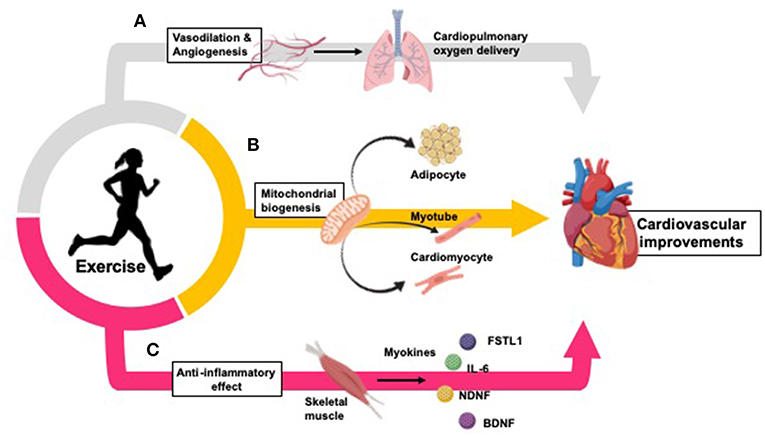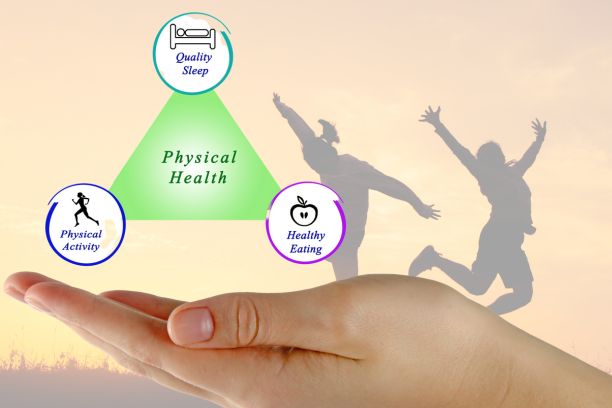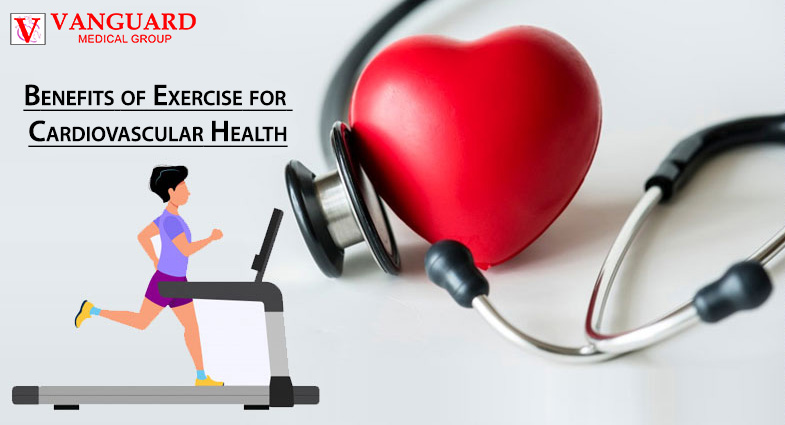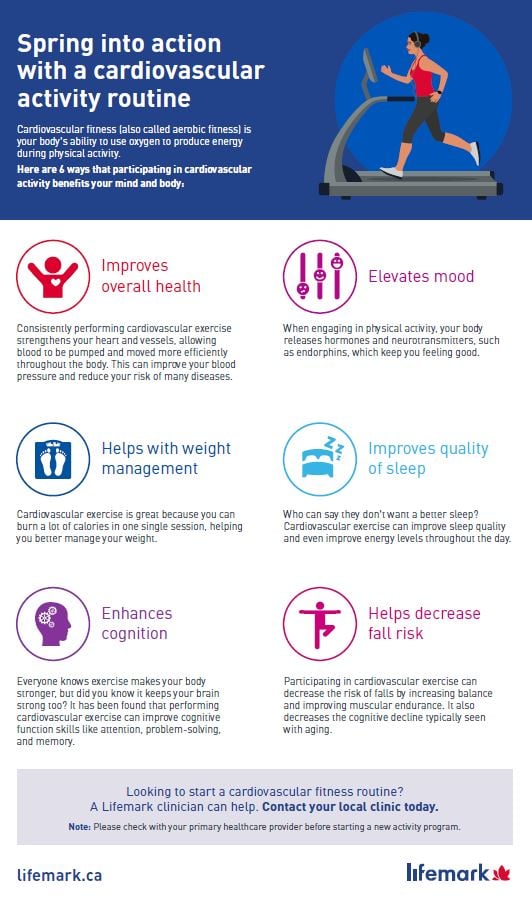Prioritizing cardiovascular exercise is crucial for maintaining overall health and well-being. Engaging in regular cardio workouts offers numerous benefits that can improve your life in many ways. By prioritizing cardiovascular exercise, you can:
- Strengthen your heart and cardiovascular system
- Lower your risk of heart disease, stroke, and other chronic illnesses
- Manage your weight effectively
- Improve your mental health and reduce stress
- Increase your energy levels and improve your overall quality of life
By making cardiovascular exercise a priority in your daily routine, you are investing in your long-term health and happiness. So, lace up your sneakers and get moving towards a healthier, happier you!
Benefits of cardiovascular exercise on overall health

When you prioritize cardiovascular exercise in your daily life, you are reaping a multitude of benefits for your overall health. Regular cardio workouts can strengthen your heart and cardiovascular system, reducing the risk of heart disease, stroke, and other chronic illnesses. Additionally, engaging in cardiovascular exercise can help you manage your weight effectively, as it burns calories and boosts your metabolism. Not only that, but it also improves your mental health by reducing stress and increasing energy levels, ultimately improving your overall quality of life. Prioritizing cardiovascular exercise is truly a rewarding investment in your health and well-being.
How cardiovascular exercise improves heart health
Regular cardiovascular exercise is one of the most effective ways to improve heart health. When you engage in activities like running, swimming, or cycling, your heart works harder to pump oxygen-rich blood to your muscles. This increased demand strengthens your heart muscles, making them more efficient and improving overall cardiovascular function. Additionally, cardiovascular exercise helps to lower blood pressure and reduce LDL (bad) cholesterol levels, both of which are key factors in maintaining heart health. By prioritizing cardiovascular exercise, you are taking proactive steps to keep your heart strong and healthy.
Types of Cardiovascular Exercise

When it comes to cardiovascular exercise, there are various types to choose from. Here are a few options to consider:
- Aerobic exercises: These are activities that increase your heart rate and breathing for an extended period. Examples include jogging, swimming, cycling, and brisk walking. These exercises are great for improving heart health and endurance.
- High-intensity interval training (HIIT): This involves alternating between short bursts of intense exercise and periods of rest or lower-intensity activity. HIIT workouts are effective at burning calories and improving cardiovascular fitness.
By incorporating a combination of aerobic exercises and HIIT into your routine, you can maximize the benefits of cardiovascular exercise. Remember to consult with a healthcare professional before starting any new exercise regimen.
Aerobic exercises for a healthy heart
To prioritize cardiovascular health, incorporating aerobic exercises into your routine is essential. These exercises increase your heart rate and breathing, promoting a healthy cardiovascular system. Consider activities like jogging, swimming, cycling, and brisk walking. These exercises strengthen your heart, improve endurance, and enhance overall fitness. Aim for at least 150 minutes of moderate-intensity aerobic exercise each week, or 75 minutes of vigorous-intensity exercise. Don’t forget to warm up and cool down properly before and after your aerobic workouts to prevent injury. Remember, consistency is key for a healthy heart.
High-intensity interval training (HIIT) for maximum results
Mental Health Benefits of Cardiovascular Exercise
Reducing stress and anxiety – Regular cardiovascular exercise can be a powerful stress reliever. It helps reduce the levels of stress hormones in your body and promotes the release of endorphins, which are natural mood elevators. Exercise also provides a much-needed distraction from daily worries and allows you to focus on physical activities.
Boosting mood and improving overall mental well-being – Engaging in cardiovascular exercise stimulates the production of brain chemicals, such as serotonin and dopamine, which are known to improve mood and enhance overall mental well-being. Exercise can also help alleviate symptoms of depression and anxiety, providing a natural and holistic approach to mental health management. By incorporating cardiovascular exercise into your routine, you can experience the uplifting benefits it brings to your mental health.
Reducing stress and anxiety through regular exercise
Regular cardiovascular exercise can be a powerful tool in reducing stress and anxiety. When you engage in physical activity, your body releases endorphins, which are natural mood elevators. These endorphins help to reduce the levels of stress hormones in your body, promoting a sense of calm and relaxation. Exercise also provides a healthy distraction from your daily worries, allowing you to focus on the physical activity at hand. By incorporating regular cardiovascular exercise into your routine, you can experience the stress-relieving benefits it brings to your mental well-being.
Boosting mood and improving overall mental well-being

Engaging in regular cardiovascular exercise not only has physical benefits but also has a positive impact on your mental well-being. When you engage in activities like running, swimming, or cycling, your body releases endorphins, which are natural mood boosters. These endorphins can help alleviate symptoms of depression and anxiety, leaving you feeling happier and more relaxed. Additionally, exercise provides an outlet for stress and can improve sleep quality, both of which contribute to improved mental health. By prioritizing cardiovascular exercise, you can boost your mood and enhance your overall well-being.
Weight Management and Cardiovascular Exercise
Cardiovascular exercise is an effective tool for weight management. By engaging in regular aerobic activities such as running, swimming, or cycling, you can burn calories and increase your metabolism. This can lead to weight loss and the maintenance of a healthy weight. Additionally, cardiovascular exercise can help to reduce belly fat, which is associated with an increased risk of chronic diseases. To effectively manage your weight through cardiovascular exercise, aim for at least 150 minutes of moderate-intensity activity or 75 minutes of vigorous-intensity activity per week. Remember to combine exercise with a balanced diet for optimal results.
How cardiovascular exercise aids in weight loss

Engaging in cardiovascular exercise is a powerful tool for weight loss. When you participate in activities like running, swimming, or cycling, your heart rate increases, which in turn boosts your metabolism. This increased metabolic rate helps your body burn more calories, leading to weight loss. Additionally, cardiovascular exercise helps to reduce belly fat, a type of fat that is linked to an increased risk of chronic diseases. By incorporating regular cardio workouts into your routine, you can effectively shed excess pounds and achieve your weight loss goals. Remember to combine exercise with a balanced diet for optimal results.
Maintaining a healthy weight through regular cardio workouts
Regular cardiovascular exercise is an effective way to maintain a healthy weight. Engaging in activities like running, swimming, or cycling helps to burn calories and shed unwanted pounds. By incorporating cardio workouts into your routine, you can increase your metabolic rate, which enhances calorie burning even when you’re at rest. It’s important to aim for a balanced routine that includes both cardio exercise and strength training for optimal results. Remember to gradually increase the intensity and duration of your workouts to continue challenging your body and maintaining a healthy weight.
Long-Term Health Benefits of Cardiovascular Exercise

Cardiovascular exercise offers numerous long-term health benefits that can enhance your overall well-being. Regular participation in cardio workouts can significantly lower your risk of chronic diseases such as heart disease, stroke, and diabetes. Additionally, engaging in cardiovascular exercise can increase your longevity and improve your quality of life as you age. By prioritizing cardio exercise, you are investing in your long-term health and reaping the rewards of a healthier and more vibrant life. So make sure to incorporate cardiovascular exercise into your daily routine and prioritize your long-term health.
Lowering the risk of chronic diseases

By prioritizing cardiovascular exercise, you are taking a proactive approach to lower the risk of chronic diseases. Regular participation in cardio workouts has been shown to significantly reduce the risk of conditions such as heart disease, stroke, and diabetes. Cardiovascular exercise helps to improve blood circulation, strengthen the heart muscle, and regulate blood pressure and cholesterol levels. These factors play a vital role in preventing the development of chronic diseases and promoting overall cardiovascular health. So, by incorporating cardiovascular exercise into your daily routine, you are actively safeguarding your long-term health and well-being.
Increasing longevity and improving quality of life
By prioritizing cardiovascular exercise, you are not just reducing the risk of chronic diseases, but also increasing your longevity and improving your overall quality of life. Studies have shown that regular participation in cardio workouts can significantly extend your lifespan. Additionally, cardiovascular exercise promotes the release of endorphins, which are natural mood boosters and can improve your mental well-being. By incorporating cardiovascular exercise into your daily routine, you are investing in a healthier and happier future for yourself. So, lace up your sneakers and get moving to reap the long-term benefits of cardiovascular exercise.
Incorporating Cardiovascular Exercise into Your Daily Routine

Incorporating cardiovascular exercise into your daily routine may seem challenging at first, but with the right mindset and strategies, it can become a habit. Here are some tips to help you get started:
- Find activities you enjoy: Choose exercises that you actually enjoy doing, whether it’s jogging, cycling, dancing, or playing a sport. This will make it more likely for you to stick to your routine.
- Schedule it in: Set aside specific times in your day for cardio workouts. Treat it as a non-negotiable appointment with yourself and prioritize it just like any other important task.
- Start small and gradually increase: If you’re new to exercise, start with shorter and less intense sessions. Gradually increase the duration and intensity as your fitness improves.
- Get an accountability partner: Find a workout buddy or join a group fitness class to keep you motivated and hold you accountable.
Remember, consistency is key. Aim for at least 150 minutes of moderate-intensity cardio exercise per week, or 75 minutes of vigorous-intensity exercise spread throughout the week. Listen to your body, start at your own pace, and gradually progress towards your fitness goals.
Tips for finding motivation and making exercise a habit
- Find activities you enjoy: Choose exercises that you find fun and enjoyable. Whether it’s dancing, hiking, or playing a sport, finding activities that you genuinely enjoy will make it easier to stay motivated and consistent.
- Set realistic goals: Set achievable goals for yourself. Start small and gradually increase the intensity and duration of your workouts. Setting realistic goals will help you track your progress and stay motivated along the way.
- Make it a priority: Schedule your exercise sessions as non-negotiable appointments with yourself. Treat your workout time as important as any other commitment in your schedule.
- Find an accountability partner: Partner up with a friend or join a group fitness class to stay motivated and hold each other accountable. Having someone to exercise with can make it more enjoyable and provide added encouragement.
- Mix it up: Keep your workouts interesting by varying the types of exercises you do. Try new activities, classes, or workouts to keep yourself engaged and prevent boredom.
- Reward yourself: Celebrate your achievements along the way. Treat yourself to a small reward after reaching a fitness milestone or completing a challenging workout. Rewards can serve as positive reinforcement and help keep you motivated.
Remember, finding the motivation to exercise regularly may take time, but with consistency and perseverance, it will become a habit that you won’t want to skip. Stay committed to your goals and enjoy the numerous benefits that cardiovascular exercise brings to your overall health and well-being.
The ideal frequency and duration of cardiovascular workouts
When it comes to cardiovascular workouts, the ideal frequency is generally around 150 minutes of moderate-intensity exercise per week. This equates to about 30 minutes of exercise on most days. However, if you prefer high-intensity workouts, you can aim for 75 minutes per week. It’s essential to listen to your body and gradually increase the intensity and duration of your workouts over time. Remember to consult with a healthcare professional before starting any new exercise regimen, especially if you have any underlying medical conditions. Prioritizing consistency and finding an exercise routine that works for you is key to reaping the full benefits of cardiovascular exercise.

